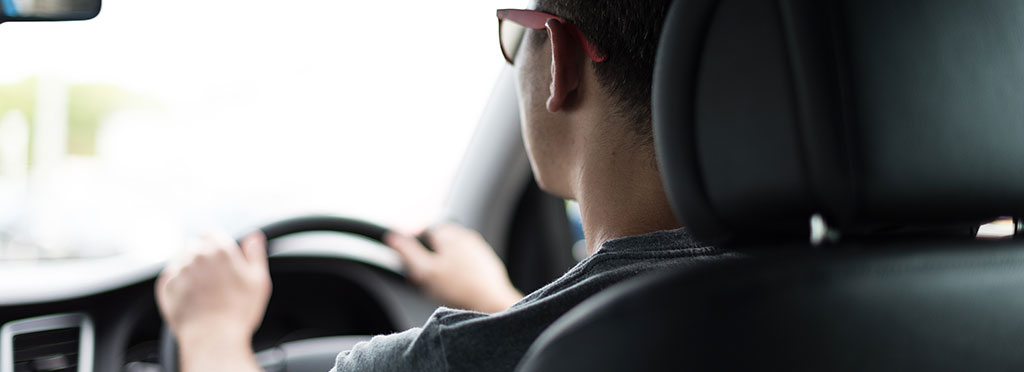Having good eyesight is essential to safe driving. Yet some drivers fail to get their eyes tested regularly, some going years or even decades without checking their vision is up to scratch. Others put themselves and others in danger by driving without their glasses or lenses.
DRIVER EYESIGHT RESEARCH SHOWS………. Crash risk is heightened by poor vision
1, This might sound obvious? If you cannot see well, you may not see a hazard or person in time to stop, or you may not be able to respond to the environment around you at all. Also if you don’t see detail easily your eyes are off the road for much longer while you read and then respond to road and traffic signs.
Road crashes caused by poor driver vision are estimated to cause 2,900 casualties and cost £33 million in the UK per year yet many drivers take their quality and standard of vision for granted.
2 . Vision problems are very common – almost three quarters (74%) of people in the UK either wear glasses or contact lenses, or have had laser eye surgery to correct their vision
3 . Long or short-sightedness combined with astigmatism (uneven focussing) and compromised eye co-ordination are the most obvious visual handicaps yet common age-related near focussing deficiency is amongst the most disturbing problems causing hazardous delays as we frequently glance from the dashboard to the road. Also some drivers may have ‘visual field’ defects which might leave parts of their peripheral vision deficient or even partially sighted. All these eyesight anomalies can affect anyone at any age and most often develop so slowly they go unnoticed. In addition many health conditions, such as diabetes, macular degeneration, cataract and glaucoma, can cause serious and sometimes permanent damage to eyesight. These conditions are more common in people aged over 50, but can also affect younger people too.
RECENT SURVEYS HAVE REVEALED THAT ONE THIRD OF ALL MOTORISTS IN THE UK HAVE POOR EYESIGHT AND ARE PUTTING THEMSELVES AT RISK ON THE ROAD.
In a recent survey of the 46% of drivers who said they need glasses or contact lenses for driving, when asked; “do you always wear them while driving?” a worrying one in eight (12%) admit driving without them in the past 12 months.
Of the 54% who said they don’t need glasses or contact lenses for driving, one in three (33%) hasn’t had an eye test in the past two years, so cannot be sure that they are safe to drive without corrective lenses.
2% of drivers who need glasses or contact lenses for driving have driven without them numerous times in the past 12 months
MOST DRIVERS BELIEVE THAT IF THEY CAN SEE CLEARLY AND THEY CAN ALSO READ A NUMBER PLATE AT 25 YARDS THEY ARE SAFE. HOWEVER THE MAJORITY OF PEOPLE ARE TOO LONG-SIGHTED AND UNAWARE THAT THEIR CLEAR VISION IS ACHEIVED INEFFICIENTLY AND AT THE EXPENSE OF COMFORT AND SAFETY
INEVITABLY FATIGUE AND THE RESULTING LACK OF CONCENTRATION IS A MAJOR CAUSE OF ‘MICROSLEEPS’; BRIEF LAPSES OF CLEAR VISION FOLLOWED BY OPEN OR CLOSED-EYE SLEEP, LASTING FROM 1 TO 30 SECONDS.
DUE TO EYESTRAIN POOR REACTIONS TO CHANGES OF ROAD AND TRAFFIC CONDITIONS OCCUR ALL TOO FREQUENTLY AND GOVERNMENT FIGURES NOW SHOW THAT AS MANY AS ONE IN SIX CRASHES ARE CAUSED BY DRIVERS FALLING ASLEEP AT THE WHEEL, RESULTING IN DEATH OR INJURY.
IT IS HARD TO BELIEVE THAT AS MANY AS 943,000 DRIVERS IN THE UK COULD BE EFFECTED IN THIS WAY
Remember that SeeDrivePro tests your ability to meet the Eyesight Regulations for Drivers in the UK using glasses or contact lenses if they have been prescribed for driving. It remains important to visit an Optometrist or Eye Doctor for regular health and eye examinations as advised by your eyecare professional.



 SeeDrivePro™
SeeDrivePro™  SeeDrivePro™
SeeDrivePro™  Vutest™
Vutest™  EVFT™
EVFT™